D for Dud
My relationship with the documentary medium has always been a problematic one; I have always been somewhat mistrustful of documentaries and their validity as a representation of actuality. Philosopher and social critic Slavoj Žižek has commented: “In order to understand today’s world, we need cinema. Literally, it is only in cinema that we get that crucial dimension which we are not able to confront in our real reality. If you are looking for what is in reality, more real than reality itself, look into the cinematic fiction” (2006). This is a logic I have always felt to be true and my argument against the documentary has always been a simple one: why try to be a representation of actuality when a fictional presentation can reveal far deeper truths about reality? This was something I wanted to explore as part of the module and, certainly, this is what I was trying to achieve in my documentary premise The Importance of Lying.
Pumping Iron is a ground-breaking documentary due to its debunking of the ignorant perceptions surrounding bodybuilding – I think it is fair to say Pumping Iron was in my subconscious while making the Fencing documentary! While I did enjoy Pumping Iron as a factual piece of entertainment, I found the sequel/making-of documentary Raw Iron to be much more interesting and revealing!
As Pumping Iron is quite openly a docu-drama there are elements of it that are fictional or highly manipulated from their original occurrences in reality. Raw Iron discusses these elements of Pumping Iron and explores the reasoning behind their inclusion. The filmmakers argue that they manipulated/fabricated certain elements because it made for a stronger narrative in the documentary. Therefore, by making the primary figures into archetypal characters: the underdog, the bully, the hero, etc, it made for a much clearer and stronger narrative (see the video above: 09:41-10:37). The filmmakers even discuss one scene they staged long after they had finished filming the initial footage! Overall, while I can appreciate Pumping Iron’s strong narrative, the effect of the factual elements saturated with fictional embellishments makes for a largely shallow and untrustworthy experience. Certainly, this is something that all documentaries are guilty of, even the fully ‘factual’ ones: “An edited documentary film is already manipulated; for many of us, staged dramatization, however beautifully shot, leads to an additional loss of credibility” (Kalow, 2011:30).
Initially, my view was: if you’re going to make a fictional presentation, then the documentary medium is redundant! In fact, you shouldn’t even bother trying to create a factual account of actuality because that is an impossible task for any reproductive medium. Rather, it is better to focus on creating a fictional account which, as Žižek says, can present ways of exploring that crucial dimension of reality, the essence of reality, more real than reality itself, that we can feel but never directly witness, except in cinematic fiction. Ultimately, this academic year has been instrumental in showing me that different forms of visual storytelling can embody and explore different ways of seeing, thinking and being. Certainly, once you begin to dissect documentaries on a theoretical and practical basis their complexities and potentials become apparent, as has been the case for me while making Fencing.
The Duality of Fencing
The concept for a documentary about fencing was Tom’s, my role in further developing the idea was in providing an external point of view to Tom’s interior point of view on fencing. To this end and in keeping with my creative identity, I encouraged the challenging of the exterior ignorant perception of fencing as only being a sport for the elite. Therefore, you could argue that we reached a state of equilibrium in our collaborative process, because our viewpoints on fencing balanced each other out: Tom was highly informative and passionate; I was highly analytical and detached.
In addition to our opposing POVs, our artistic styles differed as well. As I have already commented elsewhere on the wiki, particularly in Colour Correction, Tom was more formalistically inclined; whereas I was more inclined towards to realism. This isn’t to say that I didn’t have formalistic tendencies and Tom didn’t have realists ones; rather Tom’s majority was towards formalism and mine was towards realism.
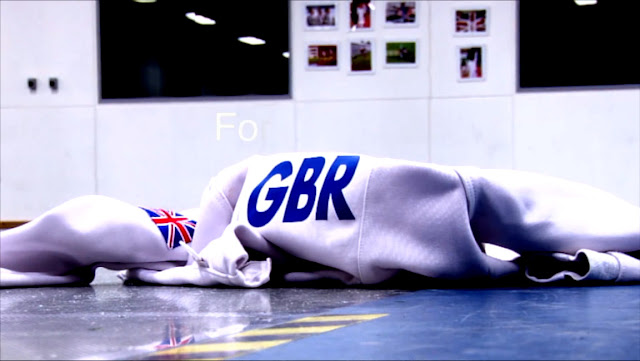 |
| Tom setting up one of his formalistic shots (top) with the finished product (bottom). |
As I have already commented in my reflections on the shoot pages (see Further Reflections), my realist inclinations can be seen in my ‘fly-in-flight’ filming style (‘in-flight’ as I was moving around). As I was the outsider, I filmed with an observational eye allowing everything to run its course in actuality. Certainly, this filming approach was drawn from my dissatisfaction with the ‘fictionalisation’ of documentaries, my POV of the outsider and from my wish to create a visually strong presentation:
“Shoot “observationally,” that is, record people and events in their natural setting, as if you were a fly on the wall. Allow events to unfold, observing and capturing reality. Your subjects don’t need to narrate for the camera because you can always add explanatory narration later, during the editing process. Good observational technique reveals character and story, bringing deep visual interest to your documentary” (Kalow, 2011:13).
However, while Tom’s style was equally visually strong, his was more in-amongst the action and knowledgeable about the various nuances of fencing. Generally, his footage is comprised of medium to close-up shots that know what to look out for in fencing; whereas mine are medium to long shots unbiasedly recording anything that is seemingly revealing. Regardless of our filming approaches, both Tom and myself were very much aware of the influence capturing and framing an image in a particular way can have on its eventual presentation:
“The camera does not see as the eye sees, even though it records visual information. Your eyes can naturally and effortlessly dart from place to place, follow the action, and focus in on the telling detail… Any movements, such as zooms or pans, should serve to advance or deepen your story. Always remember to settle on a shot for ten to fifteen seconds. If you shoot a lot of activity or a performance, position yourself close to the action” (Kalow, 2011:8).
Overall, I believe that our opposing styles worked to further balance our working relationship in regards to the qualities that each of us could bring to the table and, ultimately, has made for a rich and varied documentary presentation on the perceived stereotype of fencing and its true diversity in actuality. Below I have created a detailed reflective commentary on the final cut together with my original edit of the 2nd half and a few other points besides.
As I said in the reflective commentary, our differing POVs are very much embedded within the narrative itself. I think this point is crucial in understanding what I have gained from my studies of filmmaking this academic year. The construction of a film from its various elements and artistic inputs informs the type of impression the film will provide and the attributes of its consciousness:
“Since its invention film has been compared to the mind, whether through analogy with human perception, dreams or the subconscious. The shock of seeing a world ‘freed’ by man’s imagination caused many early writers to see a profound link between the mind of the filmgoer and the film itself, leading them to understand film as a mirror of mindful intent. In a sense film offers us our first experience of an other experience (the experience of the film camera as it were). Film seems to be a double phenomenology, a double intention: our perception of the film, and the film’s perception of its world. Thus our understanding of our world can be informed and changed by this other way of experiencing a world, this other view of a similar world” (Frampton, 2007:15).
In short, psychology is essential to successful filmmaking! I believe this is why our documentary works so well because the logic of the psychology was there right from the beginning. Aside from Tom and myself working very well together, we picked a subject and premise that we were both ideally suited to tell:
Tom is a fencer. He is highly knowledgeable and passionate about fencing. He had access to the Bath Sword Club.
I am not a fencer and I am not very knowledgeable about fencing. In fact, I bought into the ignorant stereotype. However, I am very analytical and tend to ask a lot of questions.
These two basic viewpoints/starting points were enough to present a documentary about an honest portrayal of fencing in which its dominant stereotype is challenged. As such, we went into filming having crafted a strong narrative structure that exemplified the aim above. Throughout filming, in addition to filming together, we actively exploited our differing filming styles by filming on our own. As the filming took place over the space of a month we kept questioning each other and discussing our eventual aims – we actively kept our POVs in debate with each other.
Ultimately, like the preproduction period, the filming period proved to be another research period in which we could more directly contextualise our subject matter. Furthermore, with our postproduction period, we were able to bring out our individual POVs by initially editing both halves of the documentary in isolation and then unifying those two approaches when we brought the two halves together to create what would become the final cut (see the Editing Log). Therefore, throughout this whole process, we have encouraged each other to keep working on our own psychological terms; while also combining those two psychological approaches to inform what has always been the essential aim of the documentary – debunking the myth of the fencing elite and exposing the true diversity.
Duality is an integral theme that permeates throughout the documentary: it finds expression through our two POVs, it is present in the visual design of the documentary and it exemplifies the basic premise.

 |
| The side by side shots in the documentary are examples of dualism in the film form. |
As such, this integral dualistic theme was something I felt was essential to convey in the trailer. As Tom had taken on the duty of assembling the final cut of the documentary, I took on the duty of creating the trailer. Below I have created a detailed reflective commentary on my thinking behind the construction of the trailer. Included are the two rough cuts together with the final cut and a few other points besides.
My cerebral editing style, which I mention in the reflective commentaries, has much more so become apparent to me as a result of making the documentary and having to actively exploit my POV. Indeed, as I said in the documentary commentary and again in the trailer commentary, the arrangement and pace of audio-visual information has a huge impact on the construction of a film’s consciousness and how the psychology of that consciousness is experienced by the spectator:
“When it works, film editing – which could just as easily be called “film construction” – identifies and exploits underlying patterns of sound and image that are not obvious on the surface. Putting a film together is, in an ideal sense, the orchestrating of all those patterns, just like different musical themes are orchestrated in a symphony. It is all pretty mysterious. It’s right at the heart of the whole exercise.” (Murch in Ondaatje, 2002:10).
Certainly, I think Murch’s statement has a lot to say about Žižek’s exclamation that cinematic fiction presents an understanding of reality, more real than reality itself. Successful filmmakers identity patterns and underlying currents of subtext in the collective consciousness that they are then able to exemplify and exploit in their work. This process is something akin to epiphany and, certainly, something I believe Tom and myself have done throughout the construction of the documentary. While I would say that my editing style is cerebral in a suggestive quality, I would describe Tom’s as being more on the nose and directly cognitive; however, these two approaches again work to bring out the dualistic quality of our POVs and the essential narrative aim of the documentary.
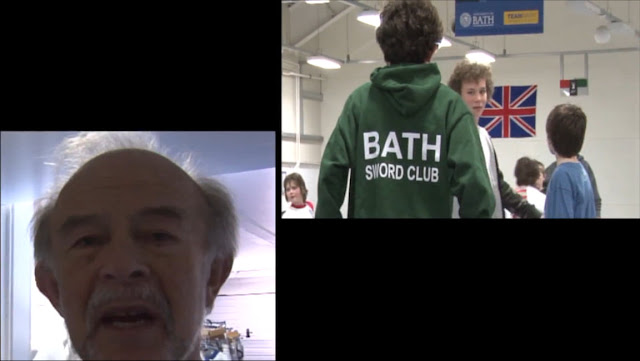

Tom's use of keyframing is one embodiment of a dualistic cognitive process happening within the documentary.
By embellishing the narrative with our psychologies and allowing our POVs to debate with each other, we have been able to give the documentary a dualistic consciousness of its own. A dualistic consciousness that complements the viewer’s consciousness as they watch and consider the subject of fencing as the documentary itself does. The visual style of the documentary, particularly in its dualism, gives the impression that an active cognitive debate is happening within the documentary itself, as indeed it is: “Documentary is really a screen version of human consciousness doing its living work” (Rabiger, 2004)!
I believe that the whole process of creating Fencing has greatly improved my psychological thinking in regards to filmmaking and the way in which I, as a filmmaker, want to manipulate the spectator. Certainly, if you view my reflection on editing the Character Study and/or my contributions in the Editing Log you will see that I often discuss the psychology behind what I am doing and why I am arranging the audio-visual elements in a particular way – the ways of seeing, thinking and being I am trying to encourage in the spectator.
The Documentary Paradox
We now live in an age where the concept of documenting is more alive than ever. While the majority of people are oblivious to it, everyone is documenting their lives and chronicling their life story as a result of their participation on social media platforms. This assembling of a life story in the cyberspace archive will go on to inform how we are defined, long after we are gone. John Berger elaborates on this, albeit long before social media platforms were even a concept:
“Adults and children sometimes have boards in their bedrooms or living-rooms on which they pin pieces of paper: letters, snapshots, reproductions of paintings, newspaper cuttings, original drawings, postcards… they have been chosen in a highly personal way to match and express the experiences of the room’s inhabitant. Logically, these boards should replace museums” (1972:23).
These 'online boards' we create about ourselves are supplying the narratives of our lives; each new status update, tweet, photo post, comment made, meme spread or video shared act as individual beats in those narratives. However, above and beyond creating a legacy, these 'online narrative boards' are playing an active role in our everyday lives. Our narrative boards have their own consciousness and existence parallel to our cognitive and corporeal ones – they are our digital alter egos.
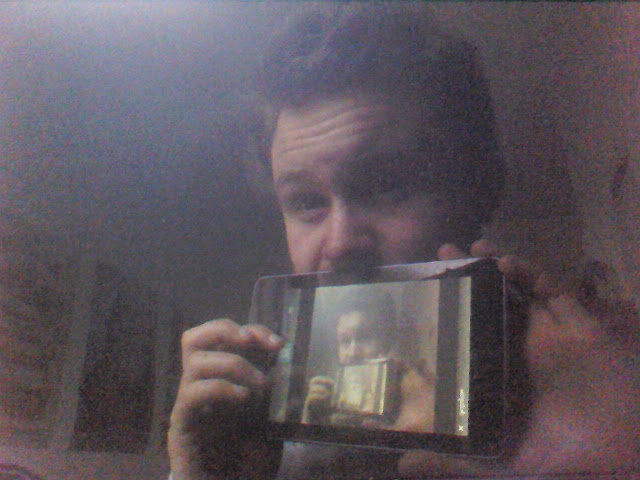 |
| Impressions of ourselves are being stored online and expanding our narrative selves - our digital alter-egos. |
Therefore, it is not just a narrative created solely by ourselves, but an interactive one which grows by contributions and manipulations by countless friends and followers. Our boards are creating fictionalised versions of ourselves based on our experiences and interactions in actuality. In addition to this, the rise of content sharing platforms and consumer filmmaking products has encouraged the user-generated production of documentaries. Documenting is now a fundamental part of our everyday lives and, as a result, the documentary medium is experiencing a renaissance. Therefore, the concepts of documenting and the documentary are more important than ever! However, if we consider the documentary as the purveyor of truth, in light of it also being a: "creative treatment of actuality" (Grierson in Rabiger, 2004), where does this leave the documentary medium as a reliable representation of reality?
In 'F for Fake' Orson Welles dissects the reproductive medium and compares filmmakers to charlatans.
The fact of the matter is – documentaries lie! It is impossible for a documentary or any reproduction of reality to present a completely unfiltered and unbiased representation of actuality: “Tell it by the fireside, or In a marketplace, or in a movie. Almost any story is almost certainly some kind of lie.” (Welles, 1973). However, as this academic year has shown me, this is not a disadvantage, but the redeeming feature of the documentary medium!
Documentaries present more than truth - through the indirect – a lie – they present a deeper and a more fundamental truth about human consciousness – we need lies to give truths their values. Lies are an essential component of humanity. As much as there is a paradox at the heart of every human being, there is a paradox at the heart of reality and in our knowledge of that reality. It is only through documentaries and other cinematic fiction and their cognitive abilities to closely mimic our own cognitive functions that we are able to glimpse and even to understand this underlying paradox, this underlying truth that can only ever be accessed via a lie: “Life is cognitive, not narrative. We need narration to understand it, but we live it cognitively” (Reygadas, 2013). Cinematic fiction takes the cognition of reality and contextualises it in a narrative – the narrative translates the hidden truth of actuality for us: “it is only in cinema that we get that crucial dimension which we are not able to confront in our real reality. If you are looking for what is in reality, more real than reality itself, look into the cinematic fiction” (Žižek, 2006). To this end, the documentary medium is by no means redundant; it is just another mode of cinematic fiction through which we can paradoxically experience falsehoods that allow us to understand the truth:
“As a charlatan [filmmaker], of course, it was my job to make it real, not that reality has anything to do with it… what we professional liars wish to serve is truth; I’m afraid the pompous word for that is art. Picasso himself said it, ‘art,’ he said, ‘is a lie – a lie that makes us realise the truth.’” (Welles, 1973).
Unlike the state of the real world and our online narratives/alter-egos which are becoming just as confusing and paradoxical as our cognitive and corporeal happenstances in the physical realm, documentary, as a mode of cinematic fiction, offers us a simplified and contextualised narrative/point of view of actuality: “In order to understand today’s world, we need cinema” (Žižek, 2006), we need lies to help us realise the truth of our actuality. Therefore, documentaries are essential because they allow us to better understand the world!
From my point of view the incentive for Fencing was in providing a context through which I and like-minded spectators could come to understand the larger diversity of fencing; while disposing of the elite stereotype - the initial and dominant image I believed was the case with fencing. Furthermore, being the co-author of Fencing it is interesting to note that the documentary only holds truth for me. Indeed, I find it hard to see how the Fencing documentary, as a revelation of truth against a lie, can possibly be a lie? However - I, as the co-author - therein lies the answer to my question!
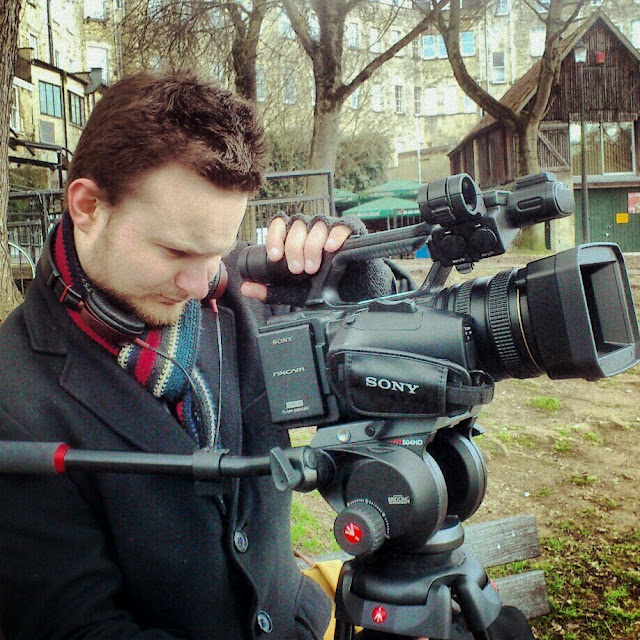 |
| My theoretical and practical understandings of filmmaking have greatly improved as a result of this academic year. |
In regards to the technical quality of Fencing, Tom and myself were blessed because we already had a significant amount of videography experience prior to embarking on this project. This prior knowledge definitely had an impact on the artistic and stylistic choices we made and, without question, our technical knowledge has grown and been refined as a result of undertaking the Fencing project.
In addition to my increased technical knowledge, my theoretical understanding of the documentary medium, and filmmaking as a whole, has been greatly nourished as a result of this module’s teaching and the process of creating the Fencing documentary. Regardless of my prior views of the medium, the act of documenting has always been something close to my heart and something I have always enjoyed doing - my administrative role on this wiki should be testament to that! However, now that I have been able to apply myself to videography documentary making on a more advanced level, I have acquired a definite taste for it! As a result of my participation in the Short Form Documentary Making module, a transformation has occurred - my relationship with the documentary medium is no longer problematic, it is paradoxical!
Further Reflections
Research – This includes an overview and some reflective writing on the research I did for the module and the fencing documentary.
My POV on Fencing – This is a reflective account of my POV on the subject of fencing.
Character Study – This includes my two edits for the character study and a reflection on its creation, particularly in the editing stage.
10/01/2013: Shoot 1 – This includes a reflection on my experiences and filming approach in this particular shoot.
17/01/2013: Shoot 2 – This includes a reflection on my experiences and filming approach in this particular shoot.
24/01/2013: Shoot 4 – This includes a reflection on my experiences and filming approach in this particular shoot.
31/01/2013: Shoot 5 – This includes a reflection on my experiences and filming approach in this particular shoot.
07/02/2013: Shoot 6 – This includes a reflection on my experiences and filming approach in this particular shoot.
Editing Log – This is a highly detailed account of the editing process in which I have reflected at great length about the evolution of the documentary and trailer.
Discussions – This includes the various discussions Tom and myself had on and off Facebook over the past six months about the documentary project. Most of the significant discussions related to the editing process have found their way into the Editing Log.
My POV – This includes the initial video presentation demonstrating my point of view for the Class Wiki. Also included is some reflective writing on my POV, many of the points raised have found validation in the Fencing project!
EYES of a Storyteller – This is the blog I have been using to chronicle and reflect on the development of my EYES web series project (my Creative Enterprise Project). In many ways, this project has required an equal amount of practical and theoretical work into the nature of narratives and filmmaking as the Fencing documentary. As much as the research I have done for the Fencing documentary has had an influence on EYES: the research I have done for EYES has had an influence on the Fencing documentary. For me these two projects form two sides of the same coin and, as such, have been very actively rubbing off on each other - POV is an integral componant of EYES! Factual and fictional filmmaking have formed two very active components for me in this academic year - my filmmaking has greatly improved as a result of it.
References
Berger, J. (1972) Ways of Seeing. London: Penguin.
Frampton, D. (2006) Filmosophy. London: Wallflower Press.
F for Fake (1973); directed by Orson Welles. 89 minutes. France, Iran and West Germany: Janus Films, SACI and Speciality Films.
Kalow, N. (2011) Visual Storytelling: The Digital Video Documentary. Center for Documentary Studies at Duke University.
Ondaatje, M. (2002). The Conversations: Walter Murch and the Art of Editing Film. London: Bloomsbury Publishing Plc.
Pumping Iron (1977); directed by George Butler & Robert Fiore. 85 minutes. USA: Rollie Robinson, White Mountain Films and Cinema 5 Distributing.
Rabiger, M. (2004). Directing the Documentary. Waltham: Focal Press.
Raw Iron (2002); directed by Dave McVeigh and Scoot McVeigh. 42 minutes. USA: Incue.
The Film Programme (21/03/2013); hosted by Francine Stock. 28 minutes. UK: BBC Radio 4, British Broadcasting Corporation.
The Pervert’s Guide to Cinema (2006) DVD; directed by Sophie Fiennes, hosted by Slavoj Žižek. 150 minutes. UK, Australia and Netherlands: Amoeba Film, Kasander Film Company, Lone Star Productions, Mischief Films and Microcinema International (2006).
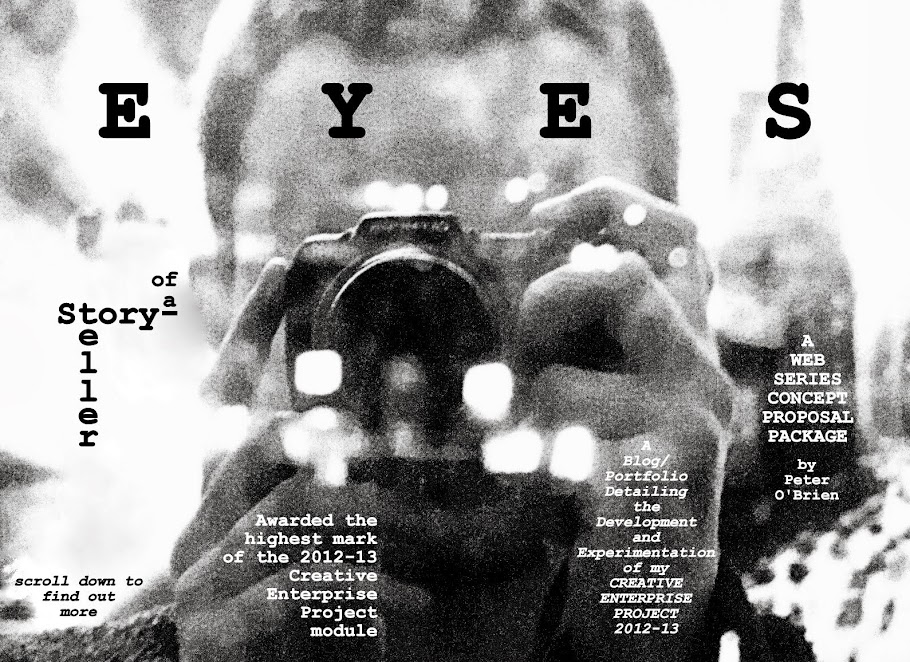
No comments:
Post a Comment